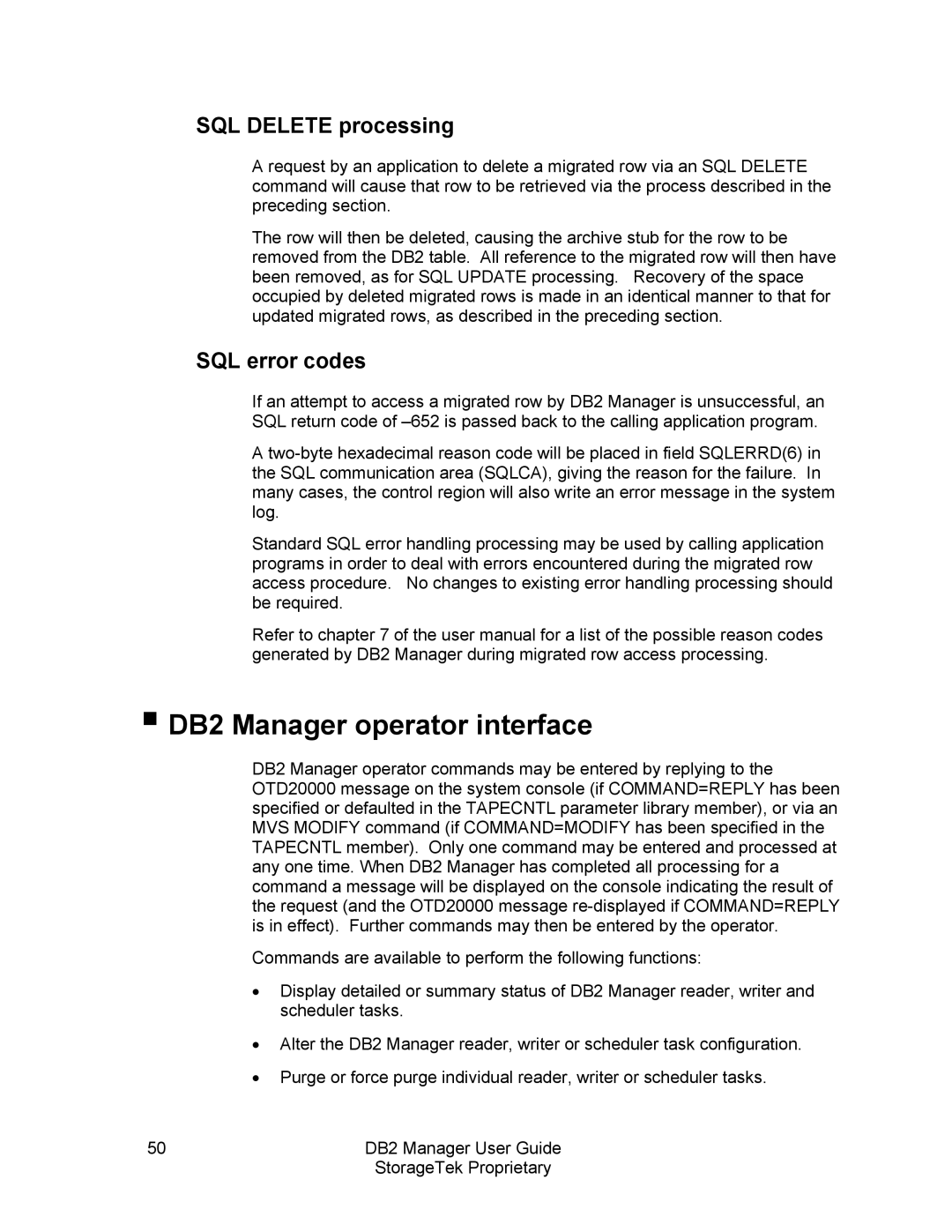SQL DELETE processing
A request by an application to delete a migrated row via an SQL DELETE command will cause that row to be retrieved via the process described in the preceding section.
The row will then be deleted, causing the archive stub for the row to be removed from the DB2 table. All reference to the migrated row will then have been removed, as for SQL UPDATE processing. Recovery of the space occupied by deleted migrated rows is made in an identical manner to that for updated migrated rows, as described in the preceding section.
SQL error codes
If an attempt to access a migrated row by DB2 Manager is unsuccessful, an SQL return code of
A
Standard SQL error handling processing may be used by calling application programs in order to deal with errors encountered during the migrated row access procedure. No changes to existing error handling processing should be required.
Refer to chapter 7 of the user manual for a list of the possible reason codes generated by DB2 Manager during migrated row access processing.
DB2 Manager operator interface
DB2 Manager operator commands may be entered by replying to the OTD20000 message on the system console (if COMMAND=REPLY has been specified or defaulted in the TAPECNTL parameter library member), or via an MVS MODIFY command (if COMMAND=MODIFY has been specified in the TAPECNTL member). Only one command may be entered and processed at any one time. When DB2 Manager has completed all processing for a command a message will be displayed on the console indicating the result of the request (and the OTD20000 message
Commands are available to perform the following functions:
•Display detailed or summary status of DB2 Manager reader, writer and scheduler tasks.
•Alter the DB2 Manager reader, writer or scheduler task configuration.
•Purge or force purge individual reader, writer or scheduler tasks.
50 | DB2 Manager User Guide |
| StorageTek Proprietary |
